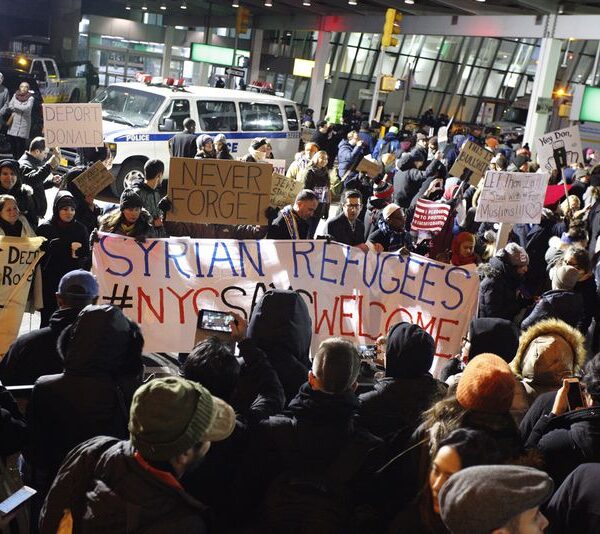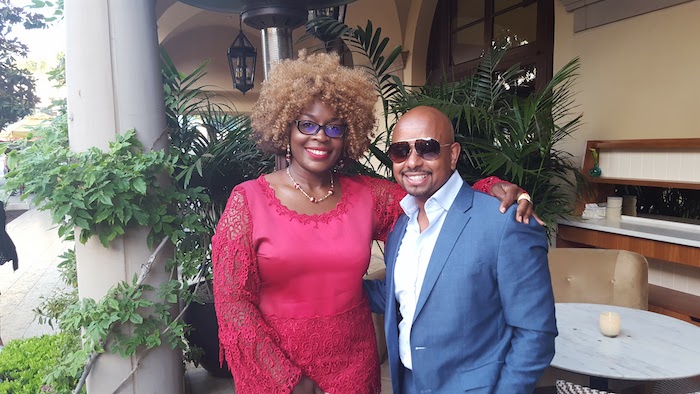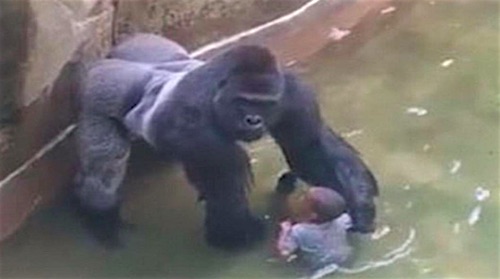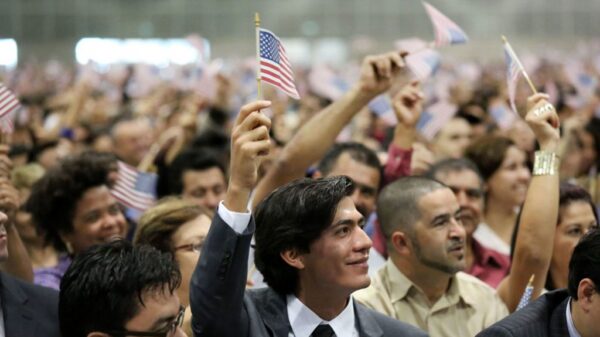As we begin the year 2023, inflation is down, but that is the end of the good economic news. The threat of a recession still looms which could result in job losses and budget cutbacks that will bring pain to many Americans. How long would this recession last? What populations will suffer the most? What areas of the economy will be most affected and which ones will be resilient? And how will new political realities affect policy and legislation both at the federal and state levels? In a Q&A briefing hosted by Ethnic Media Services (EMS), an expert panel brought clarity to this question.
QUESTION
Let’s start with the million-dollar question, we hear a lot about inflation being down, which is a good thing. Does that mean everything’s going to be okay or did the Fed policy result in an economic squeeze that will bring job losses and a recession?
ANSWER
Dr. George Fenton, Senior Policy Analyst at the Center for Budget and Policy Priorities (CBPP).
One is that you know we really do not know whether there will be a recession in 2023 or not, a recent phenomenon is that if we have a recession that it will be short and But it it could be short and deep it could be long in Shallow we’re really not not sure what’s going to happen why does that matter when it comes to the policy when it comes to the type of work that we do at this here at the center on budget when it comes to what we deal with ,i.e. The child tax credit, income tax credit are most important anti-poverty programs that this is all more reason in the face of so much uncertainty right after Extraordinary. of historical Crisis coming out of this pandemic to have a firmer Foundation of Economic Security with policies like that said and then I’ll turn it to Wendy and the forecast has it at a It’s 50/50 odds of seeing a recession in 2023 or not so their Baseline forecast has GDP growth and end jobs growth slowing to a trickle but in the fourth quarter of 2023 of this year neither of those actual show declining. A survey of about forty economists has those Higher.
Dr. Wendy Edelberg, Director of The Hamilton Project and a senior fellow in Economic Studies at the Brookings Institution. Former chief economist at the Congressional Budget Office.
One of the reasons why I think the economy needs to slow is that partly given all the fiscal support, and partly just because household balance sheets have been pretty strong, and the economy is bounced back in many ways from the depths of the pandemic we are spending. Certainly as households, and even in very Broads.Brooks as businesses. We are spending as if there wasn’t a pandemic. We are back on track like the pandemic
never happened in aggregate. And yet labor, force, and participation are still significantly below where I would have expected them to be in the absence of the pandemic.
We have maybe 1 million and a half, 2 million fewer workers than I would have expected us to have, so something’s got to give. Those 2 things are not competing with each other, and so, broadly speaking, the economy has got to slow down, or something miraculous needs to happen to the labor force participation. But I think we now have enough evidence under our belts that looks increasingly unlikely. Another way of thinking about this just in broad terms is, if you look at where the labor market was in December, there were about 225,000 net new jobs in December, of 22 so it’s worth noting that, despite all of our concerns about where the economy might be headed, we are still look very, very strong.
December 2022, is not that long ago, so 225 net 1,000 net new jobs, that is, 3 times as fast as the sustainable pace. Given what we know about population growth and the number of people who want to work, and all of those long run with trends. So, if we were to move, if the labor market were moving in more systematically, eventually, when the labor market gets to a sustainable pace, the economy can just kind of keep replicating itself period after period, instead of 225,000 that’s going to look more like this. So the labor market is just unsustainably strong. Now, something that makes perfect sense, we’re still recovering from what was a very large drop in employment, so some of that makes sense. But somehow we’re going to have to get from point A where we currently are to point B, where our economy looks like it’s on more stable footing. And getting from point A to point B is going to mean slowing.
Whether or not that means, a year of bumping along at modestly positive growth or few, just a handful of quarters at some slightly negative growth, that’s certainly the difference in whether the headlines are, going to say, recession. But it’s not. It’s not going to feel very different to the average person. And the last thing I’ll say is that it’s worth thinking a little bit about under the hood of what? What that economic world is going to look like as the economy slows, I think that this slowdown is going to be focused on the goods sector which has just been abnormally strong and is finally starting to come back to earth. And I think that means the good sector probably feels like it’s in a recession right now. It is contracting, and it kinda needs to contract in the US.So regardless of what these numbers look like in aggregate, the goods sector is probably gonna feel a whole lot weaker than the services sector.
Even if we’re in a recession, I would not be surprised if we continued to see pretty good growth in the services sector, as people continue to come back to face-to-face services
Dr. Rakeen Mabud, Groundwork Collaborative Chief Economist and Managing Director of Policy and Research.
My answer to your question is that you know we are not out of the woods. The fed has increased interest rates 7 times over in the last year, and they are likely going to be going back for more at the next open Markets committee meeting at the end of January, and Powell himself, who is, the chair of the Federal Reserve, has admitted that we have not yet felt the full effects of these re-hikes, that medicine has not fully hit the system, and there is a significant risk that the Federal Reserve pushes our economy into a needless recession which would throw millions of people out of work, slow down wage growth and cause immense financial immense economic pain.
I really come to these issues with the principle that you cannot have a healthy economy unless the people who keep our economy going, workers, families, consumers, we all hold many of those identities right unless all of us are doing well and chair Powell really needs to recognize this and put people over his war against prices. I think there’s some really interesting analysis that’s come out over the last couple of weeks that really bolsters this point.
So Employ America put out a really interesting blog post that looked at past cases where unemployment rose by a percentage point in a year. The fed is actually currently forecasting about 4.4% on employment for 2023, found that every single time that has happened 1% unemployment, we’ve had a recession, and not only that we’ve subsequently seen more than one percent unemployment. These are real lives we’re talking about. These are real people’s jobs. These are real people, struggling to put food on the table and you know the things I think that concern me, that double down my concern are that these rate hikes fail to address the underlying causes of what is driving higher prices.
Today, the reason we have higher inflation today is not that people have too much money in their pockets, or because they’re spending too much you know, sustained consumer demand is actually something that keeps a healthy economy humming along.
The reason we have inflation is that we have a system that was built by and for big corporations that have utterly failed to meet the needs of people in a moment of crisis.
This is the reason we had empty shelves at the beginning of the pandemic. This is also the reason on top of this, that the same corporations have been able to raise prices up, jack up prices beyond what their production costs would justify.
You know the most recent inflation numbers and cpi report makes it really clear that we actually don’t need mass joblessness to bring down inflation.
You know, prices can come down without throwing millions of people out of work and under the bus, and, in fact, we have other tools beyond the fed which are actually more appropriate.
Given the inflation that we’re experiencing today, you know, workers and families who are already struggling with the burden of high prices should not be asked to shoulder the additional burden of high unemployment, that’s cruel, it’s ineffective and it works against the shared goal of really building a sustainable, resilient economy that works for everyone.
So before I move on, you know I’m an economic neophyte, but this idea that the labor market is too strong is something I don’t understand, isn’t being strong a good thing?
EMS: Can you explain to us, why is this bad, and why do we need to knock it down?
Dr. Rakeen Mabud: Apparently. That’s what the Fed wants to do, Wendy. We need the labor market. It is a strong labor market which is a very good thing and getting the unemployment rate as low as it can go, is a very good thing, but it can’t go to 0 like we’re not going to get an unemployment rate. That’s 0 like if we thought that the only goal that we had, I’m gonna say something stupid, and it’s a straw man. If we thought that the only goal we had was to get the unemployment rate, to 0 we could create a law that everybody has to work and everybody has to work all the time, and employ as we could just mandate everybody has to work. Nobody has a choice. Obviously, that’s a stupid law. And we want people to be able to quit their jobs, look for a new job, take some time thinking about the best match, and we’re not gonna have an unemployment rate of 0. We’re also not gonna have a world where everybody works right. Some people want to organize their lives around, not working. So now the question is, what’s an unemployment rate? And what’s a level of, you know how many people work relative to how many people don’t? What does the world look like that is somewhat stable? Now you have to define what you mean by stable, and the way the fed thinks about it is that they have 2 mandates. They want to have employment and be as high as they can be in a sustainable way. And they want to have information that is stable. So they don’t have a mandate that inflation has to be 2%, but they have a mandate that inflation has to be essentially low and stable. So whether or not that’s 2% or 3% or 4%, it has to be stable at that rate. So, then the question is, how tight of a labor market can you have? Where inflation can replicate itself, period after period after period, so everybody can stop thinking about it and just know inflation is always going to be 3. Inflation is always going to be 2%, whatever that world is. It’s stable. Okay? So the world we’re in now with the overall unemployment rate at about 3 and a half or even less than 3 ½. Work firms are trying so hard to find people to come to these jobs that they’re having to entice people to come into work who are like, “you know what? I actually right, you know, I kinda like my life where I’m home with my kids. I kinda like my life, where I’m only working 20hrs a week. I kind of like my life being retired the only way you’re gonna be able to entice me to come in is give me a higher wage”, and that’s all well and good for that person.
But what it means is that as firms are trying to find more and more people to work, they’re having to raise wages and if they’re raising wages they have to raise prices. And what this means is that inflation is the main factor that’s given us the incredible surge in inflation that we’ve seen but it is certainly a factor that it is creating price pressure and what it means is that it’s just creating an unstable inflationary situation. And what I can tell you for sure is that a net gain of 225,000 jobs in every given month? Our economy cannot sustain that. That’s not the way economists use it. That’s not a steady state. That’s a transition to something else. But that’s not a steady state. We cannot do that. We don’t have enough population growth, we don’t have enough immigration growth.









